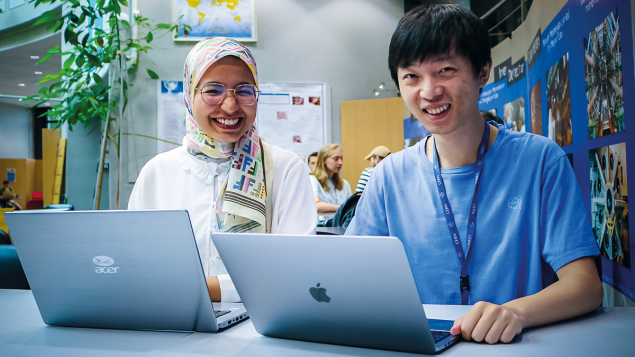As the CERN & Society Foundation turns 10, founding Director-General Rolf-Dieter Heuer argues that physicists have a duty to promote curiosity and evidence-based critical thinking.

Science is for everyone, and everyone depends on science, so why not bring more of it to society? That was the idea behind the CERN & Society Foundation, established 10 years ago.
The longer I work in science, and the more people I talk to about science, the more I become convinced that everyone is interested in science whether they realise it or not. Many have emerged from their school education with a belief that science is hard and not for them, but they nevertheless ask the very same questions that those at the cutting edge of fundamental physics research ask, and that people have been asking since time immemorial: what is the universe made of, where did we come from and where are we going? Such curiosity is part of what it is to be human. On a more prosaic level, science and technology play an ever-growing role in modern society, and it is incumbent on all of us to understand its consequences and engage on the debate about its uses.
The power to inspire
When I tell people about CERN, more often than not their eyes light up with excitement and they want to know more. Experiences like this show that the scientific community needs to do all it can to engage with society at large in a fast-changing world. We need to bring people closer to an understanding of science, of how science works and why critical evidence-based thinking is vital in every walk of life, not only in science.
Laboratories like CERN are extraordinary places where people from all over the world come together to explore nature’s mysteries. I believe that when we come together like this, we have the power to inspire and an obligation to use this power to address the critical challenge of public engagement in science and technology. CERN has always taken this responsibility seriously. Ten years ago, it added a new string to its bow in the form of the CERN & Society Foundation. Through philanthropy, the foundation spreads CERN’s spirit of scientific curiosity.

The CERN & Society Foundation helps the laboratory to deepen its impact beyond the core mission of fundamental physics research. Projects supported by the foundation encourage talented young people from around the globe to follow STEM careers, catalyse innovation for the benefit of all, and inspire wide and diverse audiences. From training high-school teachers to producing medical isotopes, donors’ generosity brings research excellence to all corners of society.
The foundation’s work rests on three pillars: education and outreach, innovation and knowledge exchange, and culture and creativity. Allow me to highlight one example from each pillar that I particularly like.
One of the flagships of the education and outreach pillar is the Beamline for Schools (BL4S) competition. Launched in 2014, BL4S invites groups of high-school students from around the world to submit a proposal for an experiment at CERN. The winning teams are invited to come to CERN to carry out their experiment under expert supervision from CERN scientists. More recently, the DESY laboratory has joined the programme and also welcomes high-school groups to work on a beamline there. Project proposals have ranged from fundamental physics to projects aimed at enabling cosmic-ray tomography of the pyramids by measuring muon transmission through limestone (see “Inside pyramids, underneath glaciers“). To date, some 20,000 students have taken part in the competition, with 25 winning teams coming to CERN or DESY to carry out their experiments (see “From blackboard to beamline“).
Zenodo is a great example of the innovation and knowledge-exchange pillar. It provides a repository for free and easy access to research results, data and analysis code, thereby promoting the ideal of open science, which is at the very heart of scientific progress. Zenodo taps into CERN’s long-standing tradition and know-how in sharing and preserving scientific knowledge for the benefit of all. The scientific community can now store data in a non-commercial environment, freely available for society at large. Zenodo goes far beyond high-energy physics and played an important role during the COVID-19 pandemic.
Mutual inspiration
Our flagship culture-and-creativity initiative is the world-leading Arts at CERN programme, which recognises the creativity inherent in both the arts and the sciences, and harnesses them to generate benefits for both. Participating artists and scientists find mutual inspiration, going on to inspire audiences around the world.
“In an era where society needs science more than ever, inspiring new generations to believe in their dreams and giving them the tools and space to change the world is essential,” said one donor recently. It is encouraging to hear such sentiments, and there’s no doubt that the CERN & Society Foundation should feel satisfied with its first decade. Through the examples I have cited above, and many more that I have not mentioned, the foundation has made a tangible difference. It is, however, but one voice. Scientists and scientific organisations in prominent positions should take inspiration from the foundation: the world needs more ambassadors for science. On that note, all that remains is for me to say happy birthday, CERN & Society Foundation.








